Culture
Revelry of the Visayan People: Sinulog
In other parts of the Visayas, the Sinulog is also widely-celebrated in different ways.
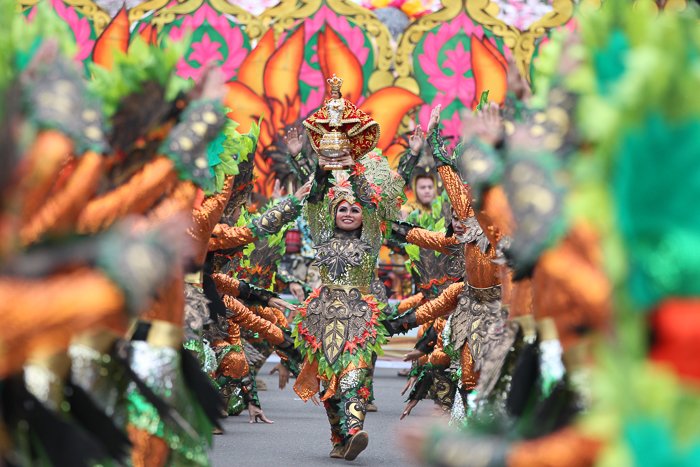
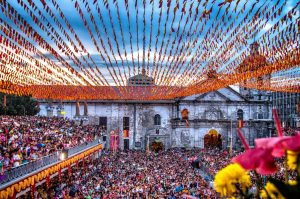
In Cebu, the holiday season doesn’t end with celebrating the beginning of a new year. It stretches throughout the whole month of January for the annual Sinulog Festival, a celebration in honor of Cebu’s patron saint, Señor Santo Niño. It’s known for the colorfully-themed dancing and street parade, and is something that’s inherently Cebuano. But, did you know that in other parts of the Visayas, Sinulog is also widely celebrated?
Aside from Cebu, there are two places that celebrate Sinulog with their own touch of culture. These festivals are Aklan’s Ati-atihan Festival and Ilo-ilo City’s Dinagyang Festival. Let’s take a look at how these two celebrate the Sinulog in their own ways.
Ati-atihan Festival of Aklan, Panay Island
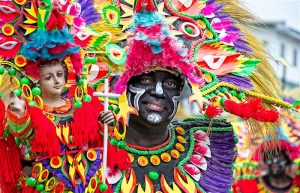
Although Cebu is widely known for its grander take of Sinulog, Kalibo-Aklan’s Ati-atihan Festival is said to be have inspired the Sinulog, and is dubbed as the “Mother of All Philippine Festivities”.
A version of its legend tells the story of an unnamed fisherman of Barangay Naile in the western part of the province who went to fish at the river, but he caught a piece of wood instead of fish. He tried to throw the piece of wood away, but it returned repeatedly to his net. He decided to bring the wood and used it as fuel to cook his meals. As the fisherman and his wife slept, they heard a beating sound nearby. When they looked where the sound came from, they found the wood with a carving of a child.
Seeing this, the fishermen decided to put it at their altar. The family received blessings from there, including bountiful catches. A few weeks went by and the fisherman decided to ask a priest for advice, and the priest told him to place the wood at the Ibajay Parish. Several days later, the residents wondered why the piece of wood always disappear and repeatedly found on top of the fisherman’s house. The residents of Ibajay interpreted this incident as a call for them to seek forgiveness of their sins, and part of their penance is to blacken their faces and body with coal and to dress in rags. After doing this, the wood no longer left the parish.
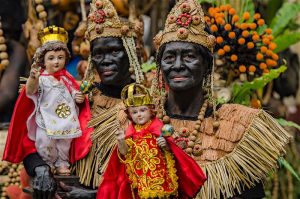
In June 11, 1871, a Kalibo priest signed a testament with businessmen in town to institutionalize the holding of the annual Kalibo Santo Nino Ati-atihan Festival. During those times, the tradition of its revelry was held every noon as a sign of penance while dancing in the streets. The National Commission of Culture and the Arts (NCCA) named the Kalibo Santo Niño Ati-atihan Festival as “The Mother of Philippine Festivals.”
Now, the phrase “Hala Bira! Pwera Pasma!” is associated with the Sto. Nino Ati-Atihan Festival as the revelers and devotees of some painted in coal, dancing to the beat of the drums while carrying their variations of baby Jesus statues. Festivities happen all over the town from morning to the wee hours of the next morning, rain or shine.
Dinagyang Festival of Ilo-ilo City
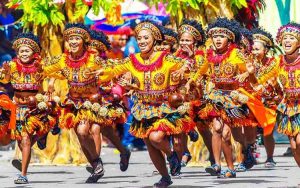 The word “dinagyang” was coined by Ilonggo writer and broadcaster Pacifico Sudario in 1977, and means “merry making”. It’s Ilo-ilo’s version of the Ati-atihan Festival. Started in 1968, a replica of the original image of the Santo Nino from Cebu was brought to Ilo-ilo by Fr. Sulpicio Enderez of Cebu as a gift to the Parish of San Jose, accompanied with several Cebuano devotees and received by the Ilonggos at the Mandurriao Airport.
The word “dinagyang” was coined by Ilonggo writer and broadcaster Pacifico Sudario in 1977, and means “merry making”. It’s Ilo-ilo’s version of the Ati-atihan Festival. Started in 1968, a replica of the original image of the Santo Nino from Cebu was brought to Ilo-ilo by Fr. Sulpicio Enderez of Cebu as a gift to the Parish of San Jose, accompanied with several Cebuano devotees and received by the Ilonggos at the Mandurriao Airport.
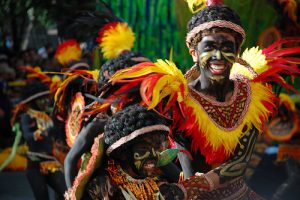
The festival had 4 participating tribes then, but as the celebrations improved through the years, the number of groups and tribes participating increased as well. Like the Aklan celebration, the audience are encouraged to dance with the parade and join the participants, giving them room to forget their frustrations and bind faith with the Santo Nino.
It was also in 1977 where the government ordered the various regions of the Philippines to come up with festivals that could boost the tourism and development. Ilo-ilo CIty readily adapted Ati-atihan as its project as its festival reflects the Illonggo’s artistry, craftsmanship and creativity through their dances and costumes.
Since the 16th century, the great devotion to the Santo Niño in the Philippines had spread through the Visayas. Many people make their yearly journey to churches to join the procession and festivals, and this signifies the rejection of former animist beliefs. It transcends generation and it has improved the socio-cultural aspect of the region. There’s no topping the grandest festival called Sinulog.
Culture
Cebuano Pride: The National Museum of Cebu
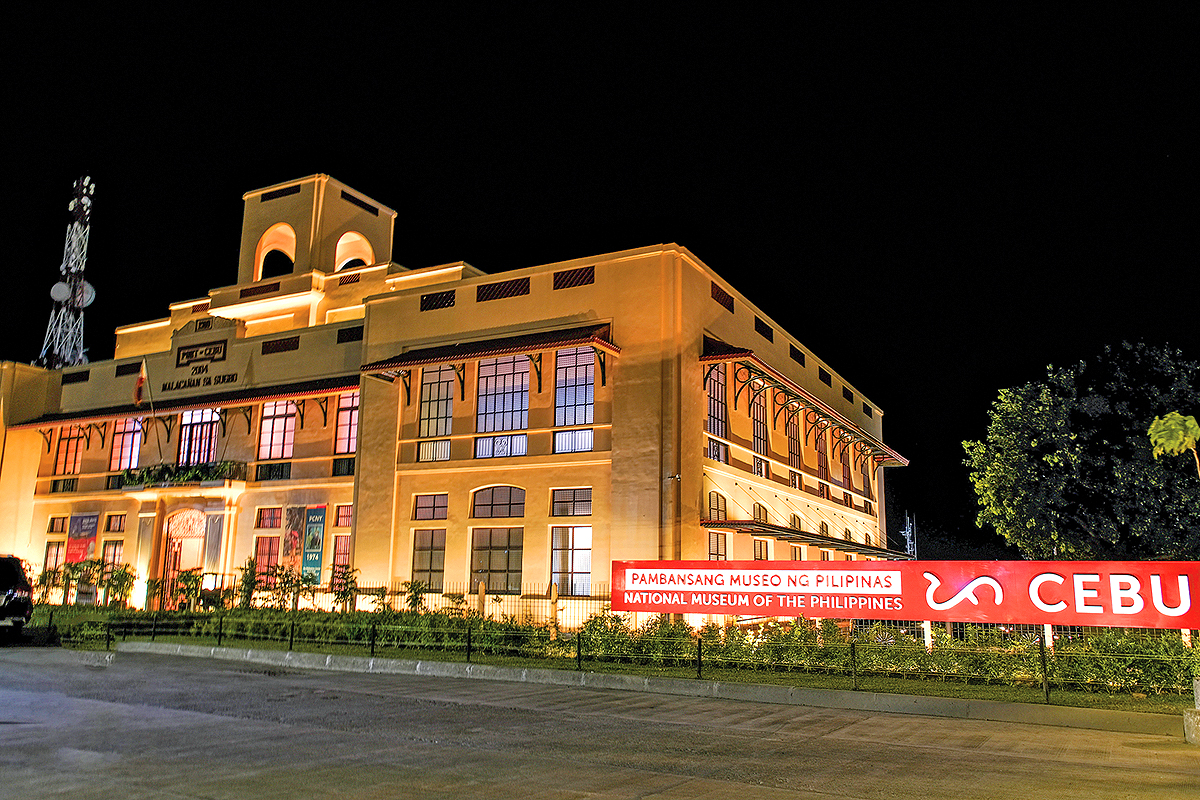
Pride of Cebu
By Eva Gullas
photos courtesy of DOT

Cebu City Tourism’s Neil Odjigue, Cembeth Hortillano and CCTC Chairperson Joy Pesquera

Museum Director Jeremy Barns, Maryanne Arculli, Andronik Aboitiz and wife Doreen, Amanda Luym

Some of the abstract art from the New York collection

Writer Eva Gullas beside Elmer Borlongan’s Battle of Mactan
Culture
The Uncommon Traditions that Mexicans and Filipinos share when celebrating the Day of the Dead.
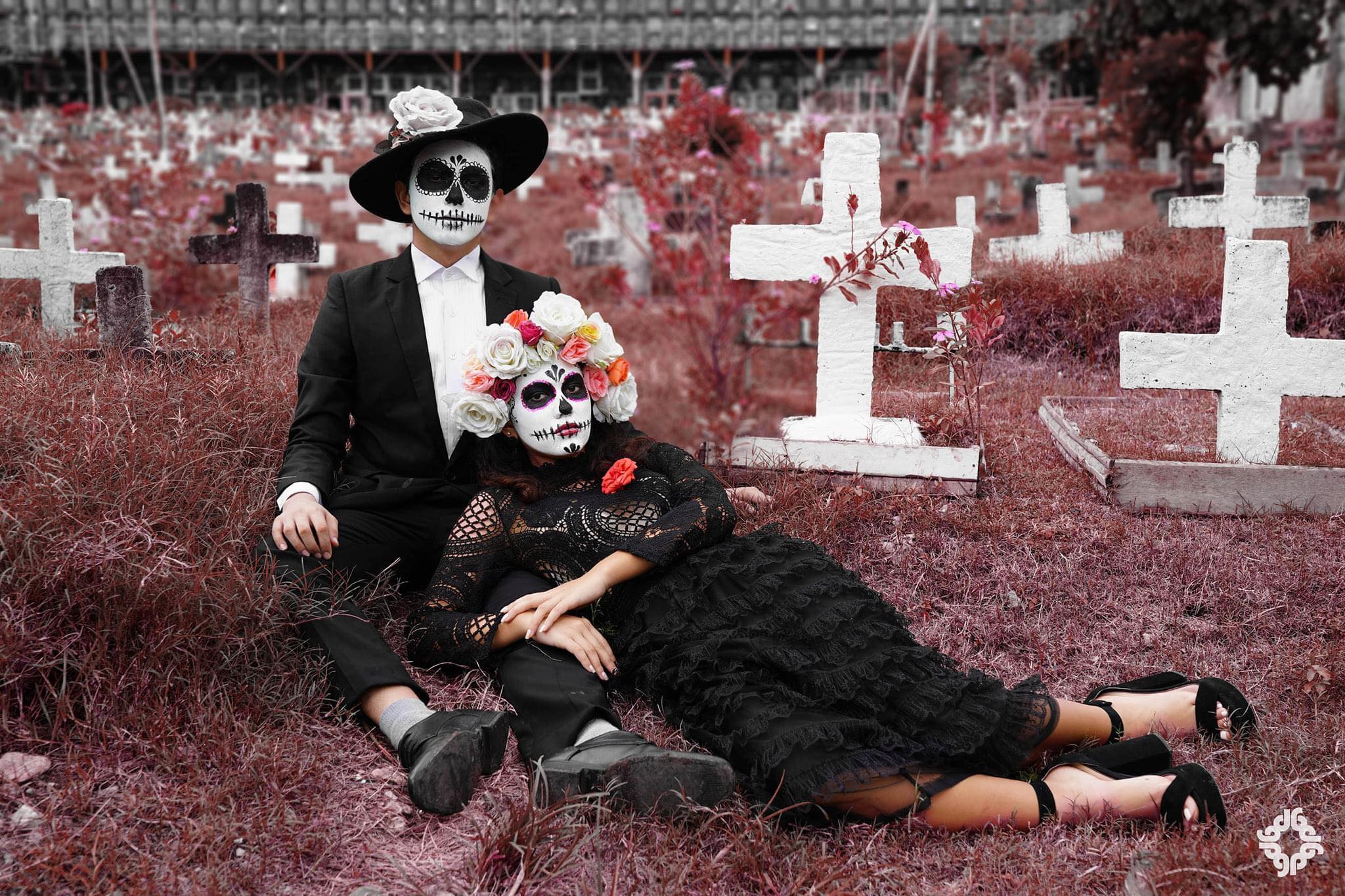
Dia de los Muertos
By Allain Dumon Fonte
The 2nd of November is All Soul’s Day, a holiday that is very important to many Filipinos to remember our loved ones who passed on. This is also widely celebrated in Mexico as “Dia De los Muertos” or in English, “The Day of the Dead”. And Mexicans celebrate the 2nd of November grander than they celebrate Christmas. Well, you can witness it from the Disney movie, “Coco”.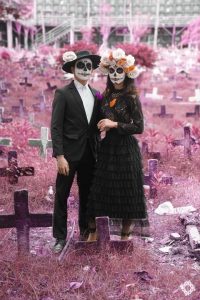
As All Soul’s Day or Dia de los Muertos is about to end, here are some interesting traditions and superstitions that Filipinos and Mexicans share:
1. IT IS NOT ON THE 31st OF OCTOBER
Dia de los Muertos or All Soul’s Day is not practiced on October 31st or on the Hallow’s Eve as many other western cultures practice; but we celebrate it on the 2nd of November. We celebrate November 1st as All Saint’s Day or the Day of the Holy, while in Mexico they call it Dia de los Innocentes or Dia de los Angelitos to commemorate the children who died too early in life.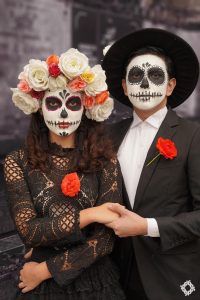
2. THE RITUAL
Both in Mexico and in the Philippines, we visit the grave of our loved ones and we clean it well. This is a ritual to honour their resting places and to let them know that they are never forgotten.
3. FLOWERS INVITE SPIRITS
In Mexico, they believe that the scent of flowers attract spirits. So the flower offerings are invitation to their dead loved ones to visit the living families. While in the Philippines, we believe that flowers offered to the dead exalt the souls and somehow fill in the sadness that we feel when missing our dead loved ones.
Most of the time, Filipinos choose all-white flowers to offer because white is the absence of colour, which means the absence of Joy and happiness. White also symbolises purity of soul which we hope our dead loved ones will attain as they journey to heaven. While in Mexico, they have the yellow Mexican marigolds as the official flowers of the dead that will guide them in their journey to the afterlife.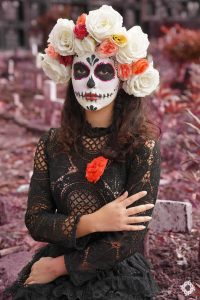
4. THE LEGEND OF THE MONARCH BUTTERFLIES
Both cultures believe that monarch butterflies are dead loved ones who visit us and show their appreciation that we have not forgotten them. A presence of monarch butterflies also means that our dead loved ones are always there guiding us and looking after us.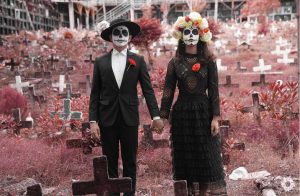
5. A PICNIC IN THE GRAVEYARD
Spending a night at the graveyard and picnicking with the rest of the family may sound very creepy to many; but to both Filipino and Mexican cultures, picnicking and spending a night at the cemetery is a must to show our love to our dearly departed. It is the only time in the year that families gather and tell stories of the dead loved ones and how colourful or how great their lives were.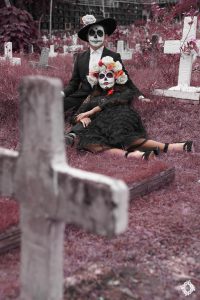
6. FOOD FOR THE DEAD
In Mexico, they have what they call “ofrendas” or an altar where the pictures of their dead loved ones are displayed and offered with flowers, candles, and their favourite food. Very similar to the Filipino culture of cooking the favourite food of our dead loved ones and everyone in the family enjoys the food for dinner.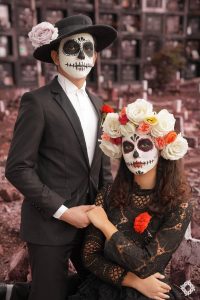
My family tradition involves me driving all the way to Colon street and buy that famous Snow Sheen’s “pancit canton”. This is my granddad’s favourite snack. Sadly, the old Visayan Restaurant is no longer there. My late uncle and my late grandpa love their sweet ad and sour fish. We also set up an “ofrenda” on their graveyard and eat their favourite food while picnicking in the cemetery. We do not spend a night in the cemetery; but while we are picnicking there, we usually play the songs of Pilita Corrales and Susan Fuentes that my late grandpa used to listen every afternoon while enjoying his coffee, pan de sal, and pancit canton.
What about your family traditions? Share your thoughts by commenting to this article.
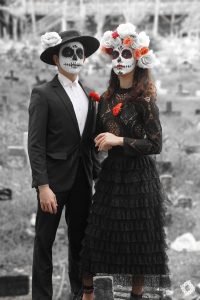 MODEL: Michael Joseph Mortola Enriquez & Alexis Wingfield
MODEL: Michael Joseph Mortola Enriquez & Alexis Wingfield
PHOTOGRAPHER: Gianne Paolo Anciano
HMUA/DESIGNER: Hazel Ocaba
STYLING: GPA Lifestyle + Clothing
Culture
Catch Ted Lasso the Emmy Award Winning Comedy Series on Apple TV+

Rating: *****/ *****
The multi award–winning comedy series airing on Apple TV+ is one of my favorite shows. Ted Lasso starring Jason Sudeikis is about a fun good-natured American football coached hired by a British soccer club (AFC Richmond in London) to become their new coach. In spite of the fact that Ted has no experience or knowledge about British football/soccer, his positive demeanor and charm helps him overcome the animosity of the team’s players, staff and fans. Eventually Ted wins over the team and the locals as they fight for position in the English Premier League.

The show won the 2021 Primetime Emmy Award for Outstanding Comedy Series and 7 Emmy Awards in its 2 seasons and Season 3 is just around the corner. You can catch Seasons 1 & 2 of Ted Lasso on Apple TV+
-

 Fashion2 months ago
Fashion2 months agoThe Qipao As Interpreted by Innovative Filipino Designers: JC BUENDIA
-

 Fashion2 months ago
Fashion2 months agoThe Qipao As Interpreted by Innovative Filipino Designers: PHILIP RODRIGUEZ
-

 Fashion2 months ago
Fashion2 months agoThe Qipao As Interpreted by Innovative Filipino Designers: PROTACIO EMPACES
-

 Fashion2 months ago
Fashion2 months agoThe Qipao As Interpreted by Innovative Filipino Designers: EDWIN AO
-

 Fashion2 months ago
Fashion2 months agoThe Qipao As Interpreted by Innovative Filipino Designers: RAJO LAUREL
-

 Fashion2 months ago
Fashion2 months agoThe Qipao As Interpreted by Innovative Filipino Designers: VIC BARBA







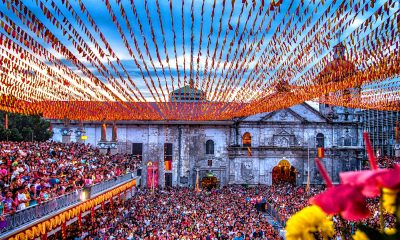







You must be logged in to post a comment Login